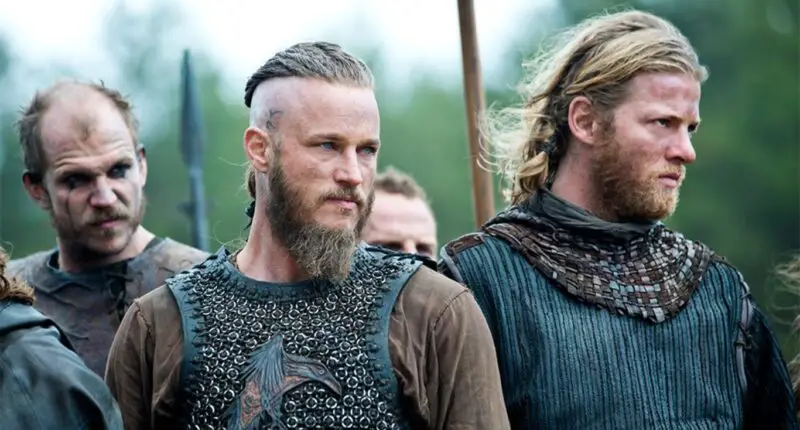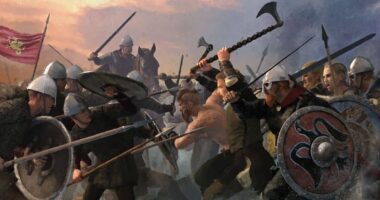The Viking Age is a period in history that has captured the imagination of people for centuries. It was a time marked by exploration, trade, raiding, and settlement by Vikings from Scandinavia throughout Europe, Asia, and the Americas. The Viking Age is generally divided into different phases based on historical events and cultural developments, and the culture of the Vikings is characterized by their religion, art, social structure, language, and seafaring abilities. This article will be Exploring the History and Culture of the Viking Age, highlighting the major events and developments that took place during this fascinating period.
Exploring the History and Culture of the Viking Age
Early Viking Age (late 8th to mid-9th century)

During this period, Vikings conducted their first raids on coastal communities in Europe, particularly in Britain, Ireland, and the Frankish Empire. These raids were often conducted by small groups of warriors seeking wealth and prestige, and they had a significant impact on the societies they attacked. The Vikings were feared and seen as a threat to the established order of the time.
The Vikings were skilled seafarers who used their long ships to travel quickly and efficiently over long distances. They were also skilled warriors who fought with axes, swords, and spears. These early raids were often conducted during the summer months when the weather was favorable, and they targeted communities that were wealthy and vulnerable. The Vikings were able to amass significant wealth and resources from these raids, which allowed them to continue their activities and expand their influence.
Middle Viking Age (mid-9th to mid-10th century)

This period saw the establishment of permanent settlements and the expansion of trade networks by Vikings. This led to the creation of large trading towns such as Hedeby, Birka, and Dublin, and the development of a more complex political and social structure in Scandinavia. The Vikings also continued their raids during this period, but they became more organized and targeted wealthy cities and monasteries.
During the Middle Viking Age, the Vikings began to establish permanent settlements in areas they had previously raided. These settlements were often established in strategic locations such as river mouths or on islands, and they became centers of trade and commerce. The Vikings traded goods such as furs, timber, and slaves in exchange for silver, spices, and other luxury items. This period also saw the emergence of a more complex political and social structure in Scandinavia, with the rise of powerful chieftains and the development of a more hierarchical society.
Late Viking Age (mid-10th to mid-11th century)

During this period, the Viking raids declined, and political consolidation and expansion became more common. Viking warriors began to serve as mercenaries in foreign armies, and some Vikings, such as Harald Hardrada, attempted to conquer other countries. The Viking Age ended with the Norman Conquest of England in 1066, which marked the end of Viking influence in Europe.
The Late Viking Age saw a decline in raiding activities as the Vikings began to focus on political consolidation and expansion. Viking warriors were sought after as mercenaries by foreign armies, and some Vikings attempted to conquer other countries. This period also saw the emergence of Christianity in Scandinavia, which had a significant impact on Viking society and culture.
Religion

Vikings worshiped a pantheon of gods and goddesses, such as Odin, Thor, and Freyja. They believed in an afterlife in Valhalla and practiced ritual sacrifice, including human sacrifice, to appease the gods. Religion played a central role in Viking society and influenced their art, literature, and daily life.
Viking religion was polytheistic, with a pantheon of gods and goddesses that represented different aspects of nature and society. The Vikings believed that the gods and goddesses played an active role in their lives and that they needed to appease them through offerings and sacrifice. Religion also influenced Viking art and literature, which often depicted scenes from mythology and legend.
Art and Craftsmanship

Vikings were skilled metalworkers, woodcarvers, and weavers. They created intricate metalwork, such as jewelry and weapons, and decorated their everyday objects with intricate designs. The Vikings also produced beautiful textiles, including woolen fabrics and tapestries.
Social Structure
Viking society was hierarchical, with powerful chieftains and kings at the top and thralls, or slaves, at the bottom. Women had a higher status in Viking society than in many other societies of the time and were often involved in trade and other economic activities. Viking society was also characterized by a strong warrior ethos and a culture of honor and loyalty.

Language
Old Norse was the language spoken by Vikings, and it has had a significant influence on the development of modern Scandinavian languages. The Vikings also left behind a rich literary tradition, including the sagas, which are epic stories of heroic deeds and battles.
Seafaring and Exploration
Vikings were skilled sailors and navigators, and they traveled extensively throughout the world. They established settlements in Iceland, Greenland, and Vinland (North America), and traded with communities as far away as Baghdad and Constantinople. The Vikings also developed advanced shipbuilding techniques, including the use of clinker-built ships, which made their voyages safer and more efficient.

Conclusion
The Viking Age was a period of significant cultural and historical importance, marked by the exploration, trade, and raiding activities of the Vikings from Scandinavia. Their seafaring abilities and warrior culture allowed them to establish trade networks and influence across Europe, Asia, and the Americas, leaving an indelible mark on history. Through their religion, art, social structure, and language, the Vikings developed a complex and dynamic culture that influenced the societies they encountered. As we have seen, the Viking Age was a period of constant change, marked by different phases of development and evolution. The legacy of the Vikings can be seen today in the many artifacts and cultural traditions that have been passed down through the centuries. While the Viking Age may have come to an end with the Norman Conquest of England in 1066, its impact on history and culture continues to be felt to this day.
Also Read: The History of Pyramids | Great Pyramids of Giza


